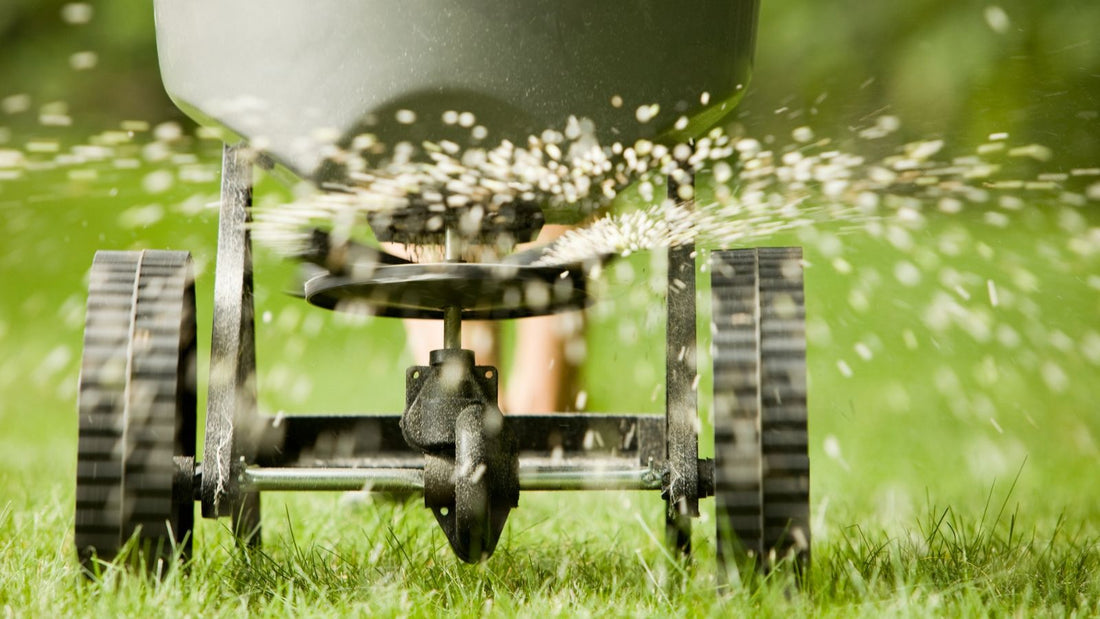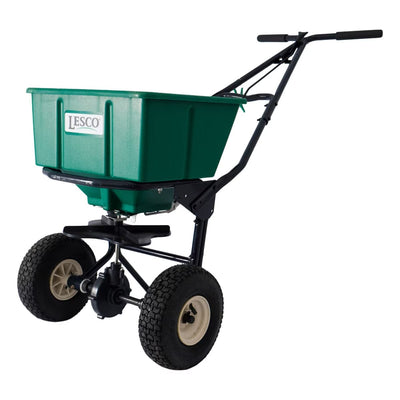Maintaining a lush, green lawn goes beyond regular watering and mowing; fertilizing is essential to provide the nutrients your grass needs to thrive.
If you're wondering how to spread lawn fertilizer, you've come to the right place. In this article, we'll dive deeper into the specific steps and techniques required to fertilize your lawn effectively.
From choosing the right fertilizer and spreader to setting up and applying the fertilizer correctly, we've got you covered.
So, if you're ready to transform your lawn into a vibrant, healthy oasis, continue reading. Based on our observations and extensive experience, we've created a step-by-step guide to help you achieve the best results.
How to Spread Fertilizer on Your Lawn
To ensure a lush and green lawn, it's essential to apply fertilizer correctly. This involves choosing the right fertilizer, selecting the proper spreader, setting it up accurately, and following a methodical application process.
Proper fertilization will provide your lawn with the nutrients it needs to thrive and maintain its health and beauty. Let's look at a step-by-step process on how to spread fertilizer on your lawn.

Pick The Right Fertilizer
As lawn care experts, we know that the first step is selecting the appropriate lawn fertilizer. How to know what fertilizer to use on lawn can depend on various factors like grass type, soil condition, and the season.
For instance, nitrogen-rich fertilizers (such as our Almighty 20-0-10 Lawn Fertilizer) are ideal for most grasses but specific blends are better suited for different grass types such as Bermuda and St Augustine, especially in the summer months.
Curious about how to grow bermuda grass or how to make st. augustine grass thicker? Why not check out our articles on both of those topics for more information.
Remember, it's important to match the fertilizer to your lawn's specific needs to promote healthy growth and resilience.
Choose A Fertilizer Spreader
Next, choose the right spreader. There are two main types: broadcast (rotary) spreaders and drop spreaders.
Based on our experience, broadcast spreaders are excellent for large areas, providing even coverage, while drop spreaders are more precise and suitable for very small lawns.
Selecting the correct spreader ensures an even distribution of fertilizer, which is crucial for avoiding over-fertilization and ensuring consistent lawn health.
Set The Spreader To The Recommended Setting
Check the fertilizer bag for the recommended spreader setting. This ensures the correct amount of fertilizer is applied. Over-fertilizing can burn your lawn while under-fertilizing won't give the desired results. You can also use our Spreader Settings Tool.
Adjusting the spreader to the manufacturer's specifications helps achieve the perfect balance, delivering the right amount of nutrients without causing damage to your grass.
Understand that it's very hard to come up with the perfect setting. Most spreaders are not calibrated so it makes it even harder to go by a setting.
We recommend portioning off your fertilizer for each area of your lawn so that you can make changes to the setting on the fly. This ensures that you will have enough product to finish fertilizing your lawn.
For example, if you need to apply 50lbs of fertilizer for your 10,000 sqft lawn, Simply spit the bag and start with about 25 lbs and make sure it covers the front yard only. After applying half of the 25 lbs. You should be about halfway through the front lawn. If you have used more, lower the setting down a notch. If used less, increase the setting.
By adjusting on the fly, you will come up with the setting you need going forward for most of your lawn applications.

Fill The Spreader Hopper
Fill your spreader hopper with the chosen fertilizer. Be sure to do this on a hard surface to avoid spills on the lawn, which can cause uneven growth. From our experience, it's best to wear gloves to avoid direct contact with the fertilizer.
Fertilize the Lawn
Fill your spreader hopper with the chosen fertilizer. Be sure to do this on a hard surface to avoid spills on the lawn, which can cause uneven growth.
From our experience, it's best to wear gloves to avoid direct contact with the fertilizer. This not only protects your hands but also prevents any potential contamination.
Properly filling the hopper ensures an even distribution during application, leading to a healthier and more attractive lawn.
Clean the Spreader And Water the Lawn
After fertilizing, clean your spreader thoroughly to prevent rust and buildup. Residual fertilizer can cause corrosion and reduce the spreader's lifespan.
Rinse it off with water and let it dry completely before storing it in a well-ventilated area. Watering the lawn immediately after fertilizing helps the nutrients soak into the soil, ensuring they reach the roots efficiently.
Blow off all hard areas such as driveways, walkways, and patios. Also, make sure not to get any fertilizer into a pool as it can cause staining.
Watering also prevents fertilizer burn and ensures your lawn gets off to a great start. By watering your lawn after fertilizing, it begins the activation process and starts working.
This step is especially important when learning how to grow grass quickly in summer or how to grow grass in az, where conditions can be more challenging.
Proper post-fertilization care maximizes the benefits of the fertilizer and promotes a healthier, greener lawn.

Conclusion
Fertilizing your lawn is a straightforward task that can yield fantastic results if done correctly. By following these steps, you can ensure your lawn remains green and healthy throughout the year.
Remember, choosing the right fertilizer and spreader, applying evenly, and watering properly are key to success.
At Lawn Synergy, we're here to help you achieve the lawn of your dreams. For more tips and personalized advice, visit our website or contact us today.
If you want to learn more, why not check out these articles below:
- How to Grow Grass on a Slope
- How to Fertilize Lawn in Spring
- Best Time to Fertilize Before or After Rain
- Best Lawn Fertilizer for Winter
- Best Time to Fertilize Lawn Before or After Mowing
- Liquid vs Granular Lawn Fertilizer
- Can You Put Starter Fertilizer on Existing Grass
- Lawn Food vs Fertilizer
- Do I Need to Fertilize My Lawn?
- Is Lawn Fertilizer Toxic?
- Is It Ok to Fertilize Lawn in Hot Weather
- Germination of Grass Seed
- How Does Grass Grow?
- How Much Fertilizer for Lawn?
- Will Fertilizer Kill New Grass?



